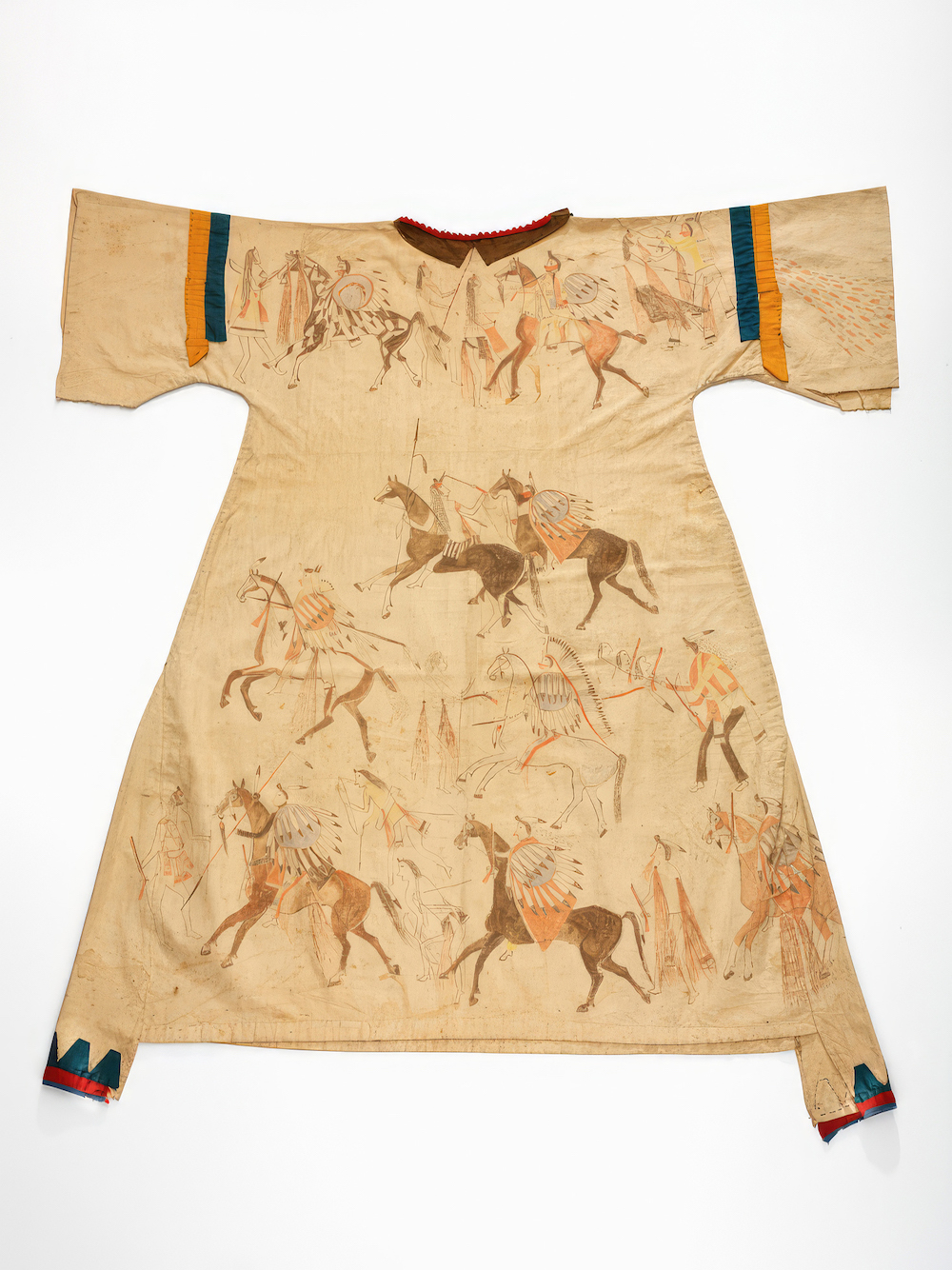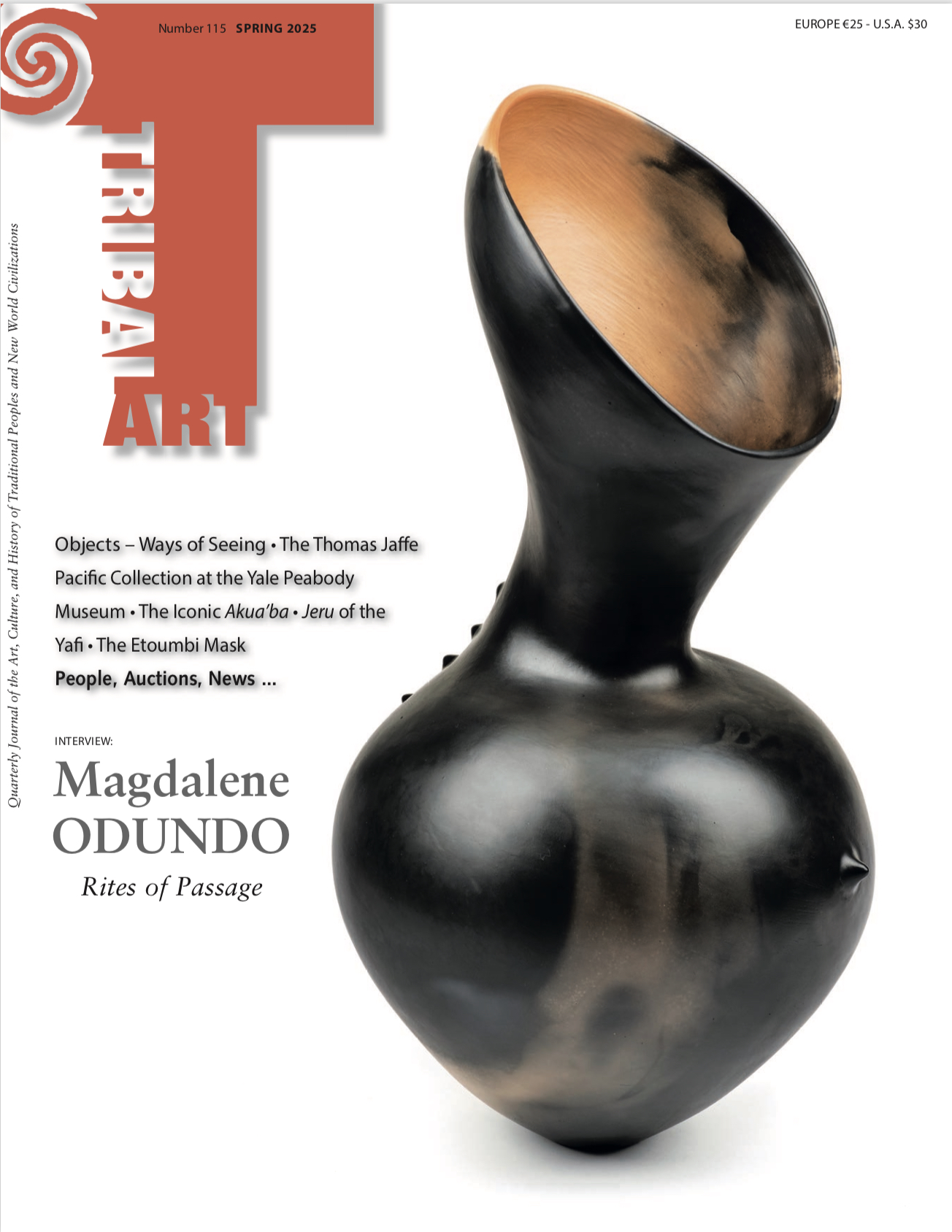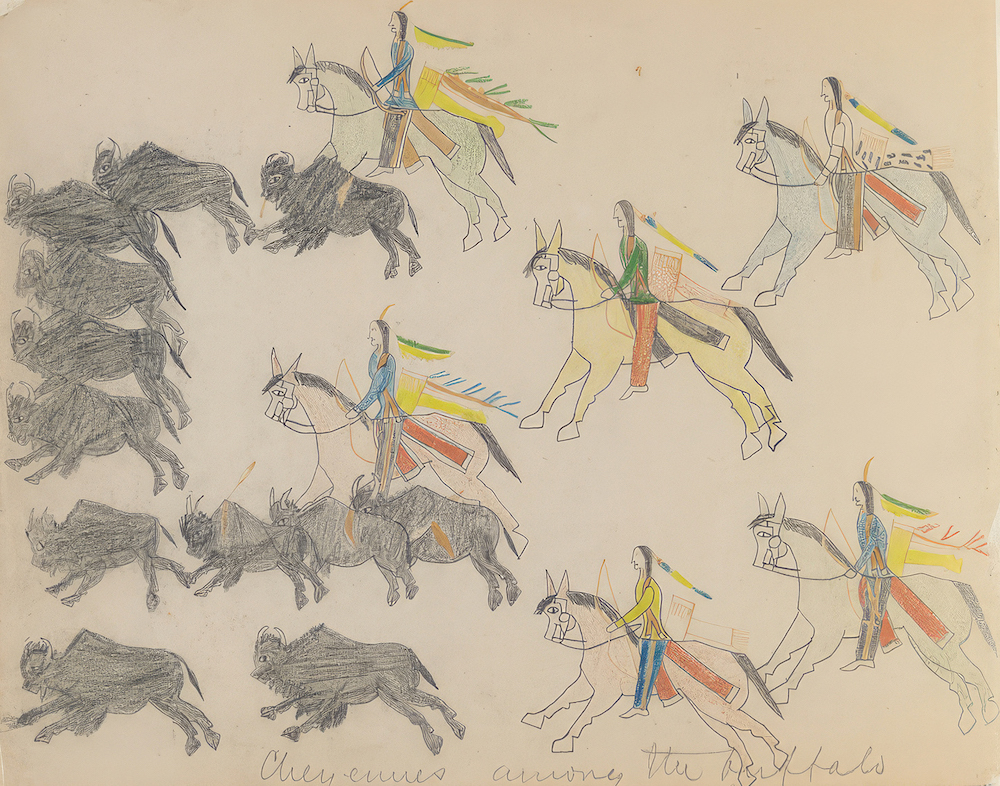Unbound: Narrative Art of the Plains
ABOVE: Bear’s Heart (Southern Cheyenne, 1851–1882), “Cheyennes among the Buffalo,” from Bear’s Heart’s drawing book.
Created in Fort Marion, Florida.
C. 1875.
Paper, graphite, colored pencil, ink. 17 x 23 cm.
Ex Colonel Richard Henry Pratt; General William Tecumseh Sherman; P. Tecumseh Sherman; Eleanor Sherman Fitch.
National Museum of the American Indian, Washington, DC, inv. 20/6231.
WASHINGTON, DC—Among the Native American peoples of the Great Plains, there is a long tradition in which warrior-artists recorded their battle exploits on buffalo-hide shirts and robes.
As new materials became available through trade in the nineteenth century, they painted even more elaborate scenes on large canvas tipi liners and used muslin cloth as well as hides for visual historical recitations known as winter counts, some documenting more than 100 years of history.
When ledger books became available, artists filled their pages with narrative drawings. A revival of “ledger art” in the 1970s resulted in a vibrant artform that takes on contemporary topics, uses a variety of media, and is widely collected.
The National Museum of the American Indian, Smithsonian Institution, in Washington, DC, is currently presenting a major exhibition that explores this far-reaching subject.
Unbound: Narrative Art of the Plains celebrates the full expression of narrative art among Native nations of the Great Plains. The exhibition juxtaposes historical hides, muslins, and ledger books, along with more than fifty contemporary works commissioned by the museum.
Illustrating everything from war deeds and ceremonial events to family life, Native identity, and pop culture, the artworks are as diverse as the individuals who created them.
Unbound: Narrative Art of the Plains
Until January 20, 2026
National Museum of the American Indian, Washington, DC
 ABOVE: Woman’s dress (back), attributed to Running Antelope (Ta-to-ka-in-yan- ke) (Hunkpapa Lakota, 1821–1896).
ABOVE: Woman’s dress (back), attributed to Running Antelope (Ta-to-ka-in-yan- ke) (Hunkpapa Lakota, 1821–1896).
Hunkpapa Lakota; North or South Dakota.
C. 1880.
Muslin, wool cloth, silk ribbon, thread, paint
141.5 x 128.4 cm.
National Museum of the American Indian, Washington, DC,
inv. 21/3665.


